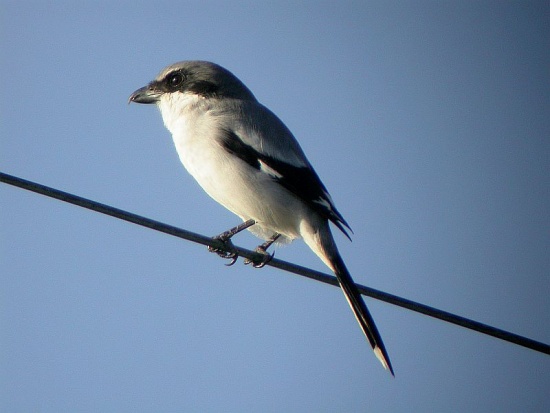- Lanius ludovicianus
Identification
November 13, 2003 Sanibel Island Causeway, Florida, USA
Length - 9 in. Gray head and back with white under parts. Has a black face mask, black bill. Wings and tail black with white markings. The Loggerhead Shrike (Lanius ludovicianus) is a passerine bird. These birds have a large hooked bill; the head and back are grey with white underparts. They have black wings and tail, with white patches on the wings and white on the outer tail feather. Unlike the similar but slightly larger Northern Shrike, the black face mask extends over the bill.
Distribution
It is the only member of the shrike family endemic to North America from southern Ontario, Quebec and Alberta, south to Mexico.
Taxonomy
Habitat
semi-open areas
Behaviour
They nest in a dense tree or shrub. The female lays 4 to 8 eggs in a bulky cup built from twigs and grass.
They are permanent residents in the southern part of their range; northern birds migrate further south.
These birds wait on a perch with open lines of sight and swoop down to capture prey. They mainly eat large insects, also rodents and small birds. Known in many parts as a "Butcher Bird," they impale their prey on thorns or barbed wire before eating it, since they do not have the talons of the larger birds of prey.
Another distinguishing feature of this bird, besides its coloration, is its flight, and wing beats. It is very non-aerodynamic looking, and is reminiscent of how an ungainly helicopter would try to move forward. It is presumed this feature gives the bird high range of motions, and flight maneuverability, for changing directions.
The population of this species has declined in the northeastern parts of their range, possibly due to loss of suitable habitat and pesticide use.
"Loggerhead" refers to the relatively large head as compared to the rest of the body




